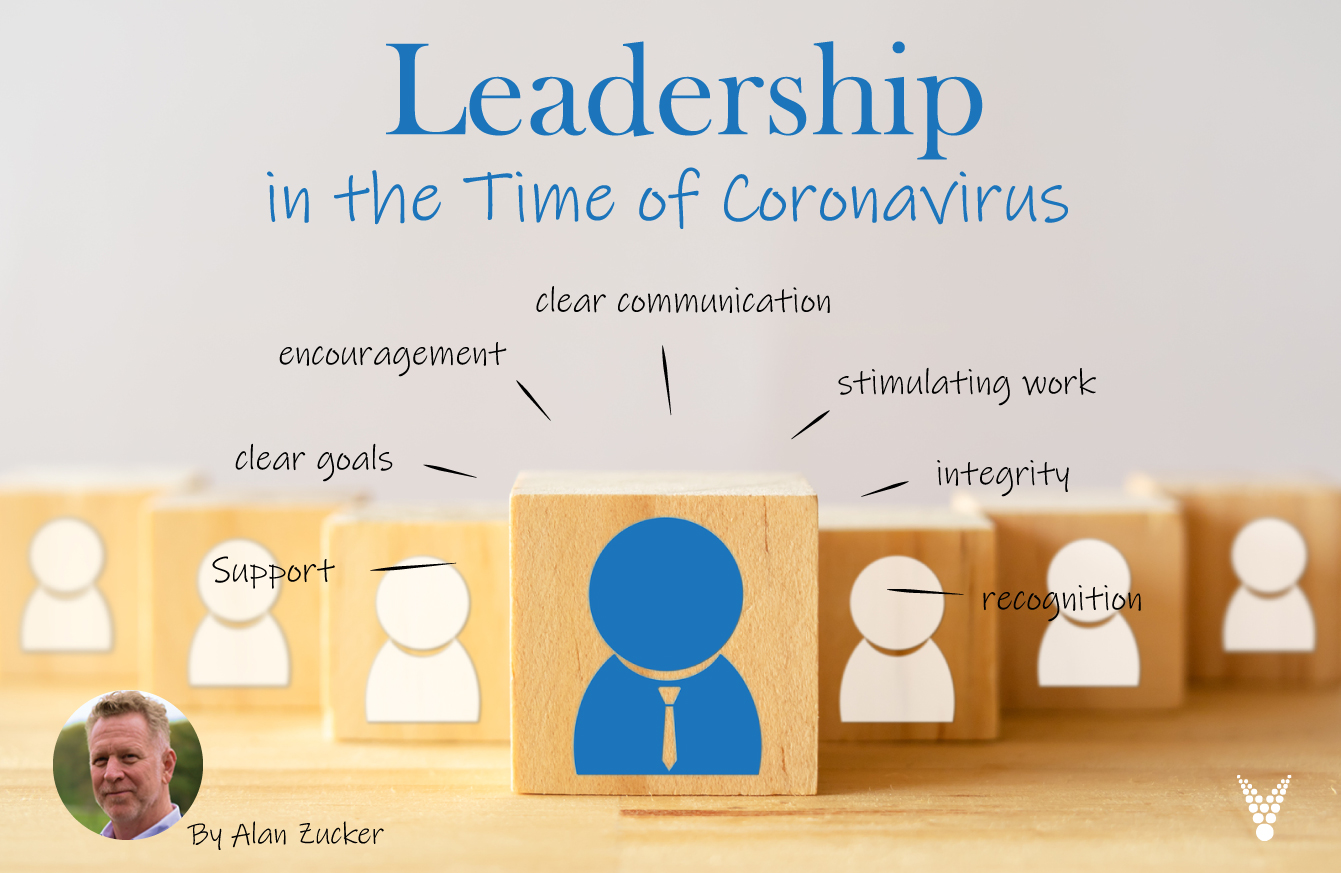The coronavirus pandemic is the most frightening, disruptive, and widespread crisis of our lifetime. As managers and leaders, none of us have faced challenges of such a magnitude or scale. Over the next several weeks and probably months, our teams will look to us for guidance, support, and leadership.
In this article, I draw from my experience managing teams through times of crisis. As leaders, our priorities should be to:
- Take care of our people,
- Continually assess the environment, and
- Plan for contingencies.
Be a Leader
Contents
Peter Drucker said that “Leadership is about doing the right thing.” We are facing complex problems, with limited information, and need to make difficult decisions. Ultimately, our values should be our guide. Our North Star should be putting people first.
Our families, friends, communities, and team members are what matters most. Our teams will get us through this crisis and help us rebuild when it is over. Our organizations’ strength lies in our people. As Sir Richard Branson said, “Take care of your employees, and they will take care of your business.”
In stressful situations, our natural inclination is to turn inward. I have seen managers shutdown—holding work close, failing to share information, and not seeking the counsel of others. Shutting down is not effective and starts the downward spiral. Instead, we should be more open and transparent than usual.
Managers set the tone for their teams. Gallup surveys find that at least 70% of an employee’s engagement is attributed to their relationship with their manager. More than ever, we need to strengthen these bonds.
Be Optimistic
We must create an environment where our teams remain focused and productive. We should acknowledge the challenges and find constructive options. Engaging our teams in problem-solving will yield better solutions.
Research from Korn Ferry reports that teams model their manager’s behavior. Managers that are optimistic and self-aware have high performing and motivated teams. Similarly, teams with negative environments mirror the manager.
Be Empathetic
Empathy is being aware of and understanding the feelings of others in a non-judgmental way. We empathize by listening to others and caring about them. We should use active listening skills: be attentive, keep an open mind, and not interjecting our solutions.
People are dealing with a lot of stress. They may have family members that are sick or at risk. They may be trying to juggle remote work and closed schools—this is not just another snow day. We need to be compassionate.
Communicate Continuously
We must provide clear, ongoing, and consistent communications. We are dealing with many unknowns, and conditions are changing rapidly. Here are some best practices:
- Establish a regular cadence for communicating updates rather than sending out multiple messages throughout the day; and
- Hold a daily or twice-daily check-in meeting to discuss recent updates and reinforce prior messages;
- Periodically check in on your team members to see how they are doing. See if they have specific questions or circumstances that need your attention.
Everyone is being bombarded with information. We should try to communicate essential information clearly and then repeat the message regularly. A study in the Journal of the Royal Society of Medicine found that patients retain little of the complex information communicated by their medical providers. Focusing on critical facts and reiterating them will be more effective.
Be Analytic
Leaders need to intentionally engage their logical decision-making skills. Our natural tendency is to “use our gut” and make quick decisions. However, these decisions are not well considered.
Our amygdala (primitive brain) responds instantly with a fight-or-flight response, which is well before our analytic mind engages. When assessing complex situations, we should regulate the process so that we are fully considering the information and making thoughtful decisions. A simple framework will improve our decision-making process:
- Identify the problem or assess the situation,
- Collect qualitative or quantitative information,
- Analyze and review the available information,
- Identify and evaluate options,
- Make decisions,
- Communicate the decision, and
- Continue to review and reassess the situation.
Plan for Contingencies
Risks are future events with a likelihood of occurrence and expected impact. Risk management provides a framework for identifying, assessing, and developing strategies to address these events.
It is never too late to implement a risk management process. Having this plan will leave us better prepared. And, a secondary benefit is reducing the overall anxiety level.
Risk planning is an ongoing activity. We should regularly reassess the environment and our plans. The daily stand-up meeting(s) is a good time to do a quick review. More detailed planning may occur weekly.
Identifying Risks
Identifying risks can be a team activity. Gather the team and give everyone a stack of Post-It Notes.
Ask the team members to brainstorm all of the threats and opportunities they can imagine. Risks should be written as IF/THEN statements. IF this risk occurs, THEN this is the impact.
We use this construct because one risk event can have many consequences. For example:
- IF a colleague is exposed to coronavirus, THEN they may get sick and be incapacitated;
- The workplace may be contaminated, or
- The person may have left work without bringing home their computer.
Within 5-10 minutes, people will identify most of the significant risks. Have people read their risks and put them or a wall or virtual board. You can use a collaborative spreadsheet (e.g., Google Sheets or Excel’s share mode) or a Kanban tool (e.g., Trello, Microsoft Planner, etc.).
Assessing Risks
We want to evaluate the risk based on the likelihood of occurrence and possible severity of the impact. I prefer to use a simple: high, medium, and low categorization. If you are using a board, draw a large 3×3 grid. If you are using a spreadsheet, create two columns, one for likelihood the other for impact.
Review each risk. Ask the team to evaluate the likelihood and impact. This is a quick assessment, and divergent opinions often expose important underlying assumptions.
Planning the Risk Response
We want to find options for addressing the risk. Consider proactive plans for avoiding the risk or reactive ones to reduce the impact if the event occurs. For the high risks, we should develop a range of response strategies.
There are 4-primary choices for handling threats:
- Is there a way to evade the risk? Working remotely and practicing social distancing is a way to avoid the risk of getting sick.
- Identify steps that will either reduce the likelihood or severity of the event. Using conferencing and collaboration tools is a way of mitigating the effect of remote work.
- Transfer the risk to a third-party. In the event of a significant disruption, there may be the option to move work to an unaffected part of the organization or trusted vendor.
- When a risk is outside our immediate control, we can escalate it to the group empowered to address that problem. Risks related to organization-wide policies might be escalated to Human Resources or Legal.
Implementing the Response
The value of planning the risk response is that we have considered our options before the event has occurred, which helps us respond quickly and more thoughtfully. When the risk is realized, we can review the plan, make adjustments, and act.
We should also identify our response triggers and decision-makers. The triggers help us decide if we should act now or wait? Knowing who will make important decisions allows us to respond more quickly.
© 2020, Alan Zucker; Project Management Essentials, LLC
To learn more about our training and consulting services, or to subscribe to our Newsletter, visit our website: www.pmessentials.us.
Related Project Management Essentials articles:
- Conducting a Successful Brainstorming Meeting
- Decision Making: 6 Ways to be More Effective
- Peering into the Crystal Ball: 7 Tips for Successful Project Risk Management
- The Daily Stand-Up Meeting: Best Practice
Image courtesy of: kitaboo.com


2 thoughts on “Leadership in the Time of Coronavirus”
Great article! thanks…i get many information from this article in term of this leadership in the time of coronavirus
Great article! Thank you for sharing this informative post, and looking forward to the latest one.
Comments are closed.